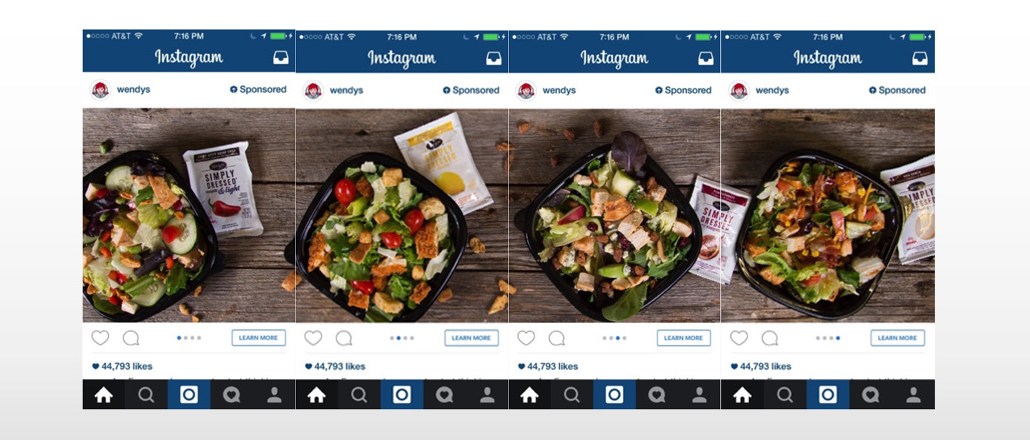
What’s more profitable than one video ad? Multiple video ads at the same time.
Instagram is expanding its ad carousel unit to now include five separate videos, up to 60 seconds long. The photo-sharing app launched the carousel last fall, letting brands add multiple images into a swipeable format along with a link that directs people to the company’s website.
The format has been a hit: People are 10 times more likely click on photo carousel ads compared to a static sponsored post, so Instagram is likely hoping the same success rate happens for the video-heavy carousel format.
Airbnb, Macy’s, ASOS, and Taco Bell, which has skillfully made fun of recipe videos in its latest Instagram campaign, are among the first brands to try the carousel. The new ads are sold on a cost-per-thousand basis. (In December, Digiday reported that Instagram ad prices were about 65 cents per click, or between $5.75 and $6 for a thousand views.)
Instagram has been pushing video on to its users lately. In March it extended the total possible length of videos from 15 seconds to a minute and remodeled the Explore tab to show off more videos.
Users will begin seeing the new ads in the coming weeks.
More in Media

No playbook, just pressure: Publishers eye the rise of agentic browsers
For the bulk of publishers, Google is, as ever, the one to watch. It’s already got agentic features within its Chrome browser, but that’s the tip of the iceberg, some say.

The biggest SEO lessons in 2025 for publishers
KPIs are changing, more AI search data is becoming available, and publishers are looking beyond search to grow their audiences and revenue.

Digiday’s comprehensive guide to what’s in and out for publishers in 2026
Adaptability stopped being a nice-to-have for publishers years ago; it became a survival skill. Here’s a look at Digiday’s guide to what’s in and out for 2026.





